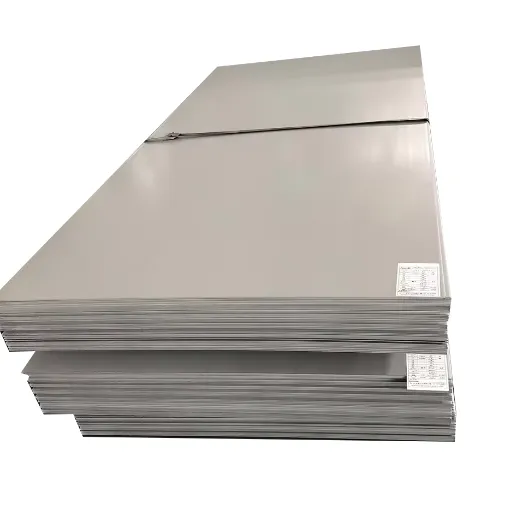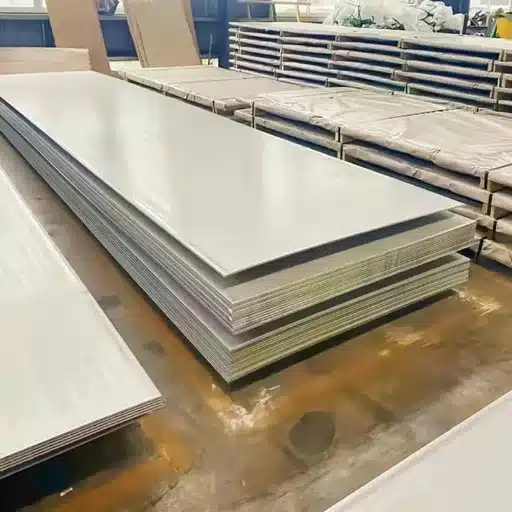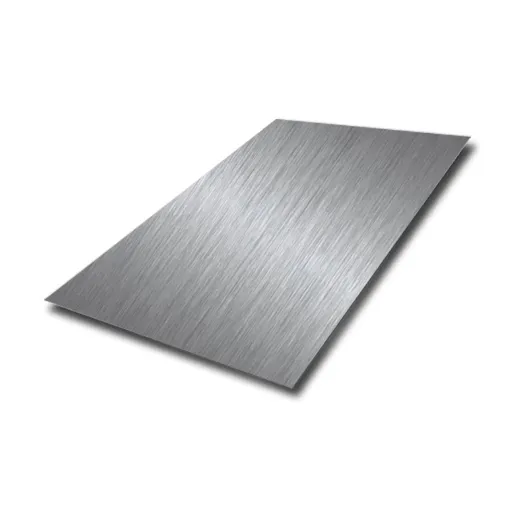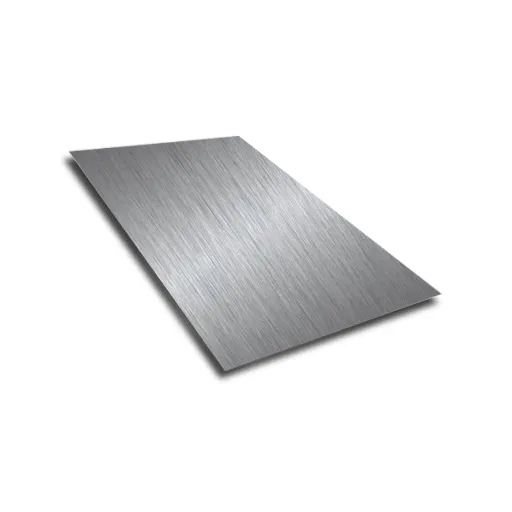Metals have been integral to human life since the earliest civilizations, stretching from the construction of aspiring masses to the ground-breaking scientific achievements known today. While there are numerous metals to be mentioned, there is little doubt about the fact that the question remains intriguing for scientists, engineers, and other enthusiasts – which is the strongest metal on the planet? This narrative delves into the field of metallurgy and strength of metals, how metal strength may be evaluated, and how certain metals are superior to others in terms of this strength.
Introduction to Strong Metals
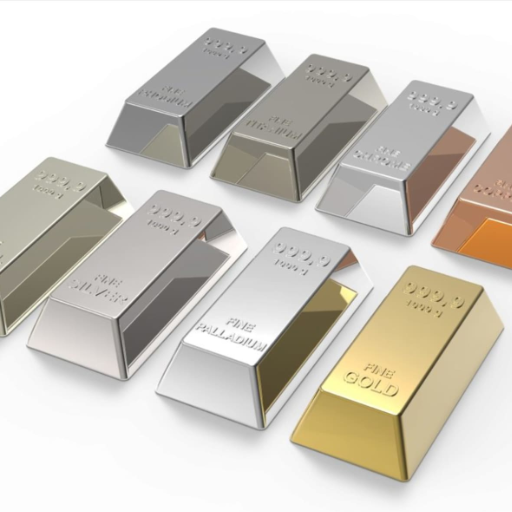
The strength profile of metals is such that the ability to resist the multiple applied forces without any form of distortion or failure is of importance to it. This is evaluated with regards to such properties as tensile and compressive strength and also hardness. Strongest metals which include tungsten, titanium and steel alloys have remarkable toughness as well as being in a better position to combat wearing. For example, tungsten has the highest tensile strength even among pure natural metals and is often used in high tension environments, where, for example, armor-piercing ammunition and industrial machinery are made. Titanium is a metal that has also been commonly used in the aerospace industry as well as in medical implants because its strength and weight ratios are quite impressive. Designed steel materials, for example, those having chromium or molybdenum, will possess a strong as well as a ductile nature and decent corrosion resistance, and are particularly transition metals essential for construction and fabrication. These metal bases assume several functions at the industrial level due to the self-support capacity they possess under the most hostile of operation conditions without experiencing a change in the structure.
The Importance of Strong Metals in Modern Industries
The application of metallic materials has progressed remarkable with the progress of new state-of-the-art technologies thereby changing the landscape in important areas. For instance, aerospace engineering makes substantial use of titanium alloys due to their excellent fatigue limits and low mass, making it possible to build structs of aircraft, which are lighter but can withstand a lot of temperature and pressure. In addition, high-strength steel is very useful in the construction of wind turbines that gets exposed to environmental effects for a long time, and the component’s services are still required without any deterioration in performance.
On another note, in the realm of medicine, cobalt-chromium and copper alloys have a very high priority when it comes to producing orthopaedic devices, due to their bio-friendly nature and excellent resistance threads, as no less important are their long-term functioning prospects in the human body. Aircraft engines are a high-performance technological structure that consists of an integration of numerous systems including the gas retention path. In this regard, modern developments have embraced the use of these superconductive materials as well, for manufacturing by 3D printing or traditional methods. These advanced features give an indication of the existence of yet more exciting opportunities of making robust materials that will serve in the future, providing a guarantee of precision starting from the basic engineering level that is most appropriate for any particular industry.
Defining Metal Strength
Metal strength is defined as the capability of a substance to withstand stress and failure without losing stability, and it may, in general, be divided into three main groups: tensile, compressive, and shear strength. Shear strength is the ability of a material to resist shear forces that tend to cause the internal shapes of the material to change. It is usually seen in metal-bonded joints where the metal starts sliding under loads, carrying the other joints with it.
These factors may be constrained by a host of considerations such as the metal’s microstructure, the type of alloy, as well as the methods of working the material. Primarily, mechanical properties of the material can be improved via heat treatments and cold working processes by adjusting grain boundaries or creating dislocations. On practical level, one should note that strength characteristics draw clear limits between the application of structure with high tensile strength. Metal strength is very often measured, depending on the method of definition, through various standards in order to meet the industry and safety requirements.
Understanding Types of Strength

Tensile Strength
Tensile strength of a material describes how much the material can resist the pulling force before it collapses. In the situation especially of cables and ropes, which work in tension, it appears most frequently. The mechanics behind such force is not a simple thing to evaluate and measure, therefore this is normally determined through tensile testing wherein the material is subjected to a tension and stress is increased until the material ruptures.
Compressive Strength
Compressive strength, on the other hand, is concerned with the materials’ ability to resist the crushing or squeezing forces. This is particularly necessary for the basic building materials such as concrete and stone. It is usual during the application of the load that the material is subjected to a certain amount of stress and gradually increased to deformation; this helps in determining the load carrying ability of the material.
Shear Strength
Shear strength is used to determine the ability of a material to resist the relative motion of its two parts held in contact with each other without separation; this motion is along the area. It is usually a crucial aspect for fasteners, joints, and beams where actions are to be made over sections. The mechanics of shear strength are vital in ensuring that construction and mechanical devises are operational and do not fail.
Importance of Strength Properties
Each type of Strength correlates to certain specific performance and /or safety requirements present in different industries and is also influenced by how it is determined and utilized.
Tensile Strength: Resistance to Being Pulled Apart
There is tensile strength, which is intrinsically a vital characteristic of any material, because it is meant to measure the elastic stress as a material is being stretched or stretched and broken. Engineering, construction and mass production processes, where materials are subject to stress in one given direction, are some of the many purposes that this characteristic is catered for. The tensile strength that materials possess, for example, includes the tensile strength test, gage lengths of the specimen, or test distances. This is against the background of the ASTM Standard, Test Methods for Tensile Testing of Metallic Materials, which is ASTM E8/E8M-04.
Some examples of this are that high-strength steel alloys such as carbon steel typically have tensile strengths of 400 MPa to 1,400 MPa, whereas this could be 20-100 MPa for common polymers. This effect is often visible in the purposeful design of components including load-resistant structures as trusses, and tension cables and cotter pins that are guaranteed to deliver services and safety standards under expected load conditions. With regard to the parameters of tensile strength of resilient materials, it is possible to discern which materials or product components are to be used and suggestions how to enhance the actual performance and reliability during the engineering design and operation.
Compressive Strength: Resistance to Being Crushed
A material’s compressive strength is its ability to bear types of axial loads that make it shrink. This feature is vital for materials such as concrete, metal, ceramic, and plastic, that are supposed to exist in tough conditions. Its dimensions are usually given in “MPa” or “psi” and come from objective compression tests. For instance, most of the present mixes of the concrete are able to manufacture the structures with compressive strength reaching 20 MPa depending on the end use to the open mix designs being capable of producing figures beyond 100 MPa. Also, some metals, including steel, have compressive strength above 250MPa and higher, depending on the quality and the processes applied. It is crucial to comprehend the principle of compressive strength for maximizing effectiveness of materials when they are employed such as in civil engineering, aerospace technology, and mechanical design as the latter ensures strength of the structures and eliminates the high probability of premature failure.
Hardness: Resistance to Scratching or Indentation
Hardness is considered to be a common basic material characteristic that reveals the level of resistance to such types of local plastic influences, as scratching, grinding, pressing. For its determination such techniques are used as the Mohs, Vickers, Brinell or Rockwell hardness tests suitable for the application of thinner measuring and necessary control. For example, the Mohs scale is based on the relative hardness of the materials according to the scale from 1 to 10 with regard to another material (scratch resistance), while the Vickers toughened glass test makes use of a diamond indenter with a pointed bottom that goes into the material at a given force. This was made possible by recent advances in material science, where super-hard materials, such as synthetic diamonds and boron nitride, were developed for use in cutting tools and wear protective coatings. It is hard for one to understand hardness care selection in materials from the socio-economic point of view as such factors as mechanical wear, durability of the surface and its resistance against scratches are important in industrial production, mechanical engineering and surface treatment techniques.
Examples of Strong Metals and Alloys

Titanium Alloys
Use of it in machine design helps prevent axial and bending stresses.
Stainless Steel
Making of structures and elements of machinery out of it is facilitated since it is easy to weld.
Tungsten
One of the features that give tungsten cons are its low coefficient of expansion and high thermal conductivity. As the temperature increases tungsten strength decreases a bit.
Maraging Steel
This type of steel is considered to have a highest strength and hardness values and easily used for making aerospace equipment tools and such processes as granting and treatment of structural materials.
Cobalt Alloys
Known as nickel-chromium-molybdenum or NiCrMoV alloys, these typically-alloyed types of structural materials will soon replace carbon steels in steam turbines.
Tungsten: The Champion of Tensile Strength
Tensile Strength: 1510 MPa
Highest among pure metals
It is known that the tensile strength of tungsten is exceptional in that in its purest form, its tensile strength is around an impressive 1510 Megapascals (MPa). Such a value is equal to that of literally the highest strength by tension, the compound metal. This is its feature under tension in hydrostatic pressure. It is also important to recognize that the sterling property of tungsten, a high melting point as high as 3422 degrees to help props in application particularly in areas where high temperatures are the order of the day. In extreme environments, these sectors require such materials due to the high stress and temperature limits. The cemented carbide used in powder metallurgical processes would increase the appropriateness of tungsten through hard metal covering. This in turn makes it possible to apply it in the making of tools composing of; cutting tools insertion; tungsten mines among others; another case is building materials including radiation protective structures covering.
Titanium: Exceptional Compressive Strength
Compressive Strength: 970-1,200 MPa
Outstanding strength-to-density ratio
Titanium is a metal well-known for its outstanding compressive strength-to-density ratio. This means that it is most suitable for those applications where high strength with low weight is a must. One of its most outstanding properties is related to its compressive strength, estimated to be between 970-1,200 MPa, is that titanium can tolerate far more force without buckling than most other materials. And in the presence of moisture, its likeability is reduced. Once that happens, the metal gets substances to both bodies, hypoxic, alloy metal materials, as well as ductile or products of the ductile titanic metals. In conclusion, the performance and service of the titanium superalloy of the Ti-6Al-4V alloy model are among the best in respect of the aim and the expectations of the present study. In various industries that require high mechanical and chemical properties of structures, this material occupies a very important place.
Chromium and Diamonds: Leaders in Hardness
Diamonds and chromium are known for their impressive rigidity. While diamonds possess the highest hardness, the rating for chromium – Mohs scale of 8.5 – owes to its use in the production of stainless steel and to developments of various protective coatings that are resistant to abrasive and destructive effects. The lattice type of unit cells – body-centered cubic – plays an important role in the mechanical properties of this element. Chromium consumption in industry is generally common, particularly in methods of electroplating in hardening of components that occupy rather long life span.
Physically, diamonds are luxurious stones because of their the most “hard” structure formed by tightly packed carbon atoms (which are tetrahedrally deposited) in a 3D lattice network structure. This explains stones in the Metalworking and polishing industry, as well as improved prospective usage, such as industrial synthetic diamonds that are utilized as cores for Stereotactic radiosurgery, a therapeutic method of treatment that employs highly targeted radiation on affected tissues or growths.
Comparing Natural Metals and Alloys

Pure elements such as gold, silver and copper are Natural metals and are extracted from the Earth. They have such characteristics as conductivity, malleability, and corrosion resistance that make them useful in too many ways. However, as a rule, their performance suffers from these very characteristics.
Alloy has been in use for a long time since it was developed in the ancient years. Engineers have developed an approach to the use of a number of metals together, especially two of them or a metal and a nonmetal, the so alloy to have a preferred property. For instance, steel is much stronger and lasts longer than pure iron as it contains iron and carbon. On the other hand, brass which consists of copper and zinc, is resistant to the corrosion process more compared to the copper in elemental state. Alloys outperform natural metals in physical properties such as strength, flexibility, and durability by reproducing the arrangement of the elements to certain values of phase equilibria, making them essential in industrial, scientific, and constructional applications.
Natural Metals: Iron and Copper
Iron and copper are among the most exploited metals due to their vast reserves and ubiquitous use. Iron, a metal with high tensile capacity and at times capable of magnetizing is used for making steel and cast iron form the integrity material. Iron is found in the form of red and brown is mined at a great scale, it is formed from mined naturally occurring minerals like hematite and magnet.
As technology advances, there could be problems in the near future in industries such as gold production and in automobile firms. On the other hand, copper is known for its ability to conduct electricity, heat and being ductile. It has a huge application in building industries for cables, pylons, connectors for electronics, and some renewable energy resources like solar panels and wind turbines. Moreover, the high corrosion resistance of copper makes it an obvious choice for use in pipes and roof installations. The physical characteristics of these metals have been used as far back as antiquity and with the growth in techniques for both exploitation and purification they have proved themselves as useful in the application of new technology and construction of buildings.
Engineered Alloys: Steel and Inconel
Given that steel comprises iron and primarily carbon, combination of certain materials, it is considered one of the most used materials in the world, closely followed by the pros it presents to the consumers such as increasing the potential and production capacity of the particular material, considering reasons why it is one of the durable and strong materials. Such sophisticated techniques, brief stress about Transmission Electron Microscopy (TEM) and how it is a common material analysis technique in metallurgy, and that Physical Metallurgy is concerned with the processing-structure-properties relationships in metals. Steels have increasingly been produced and used by the construction, automotive and aerospace industries because of their superior strength.
Yet another example of advanced engineered nickel based Superalloys would be Inconel which is a group of nickel based Superalloys that are made specifically to withstand harsh environments, especially high temperature. Given the substantial figures in terms of temperatures, oxide formation, and deformations the ability to develop “perfect” Inconel or “perfect” titanium under such conditions is close to a miracle. Additionally, owing to the unique properties of Inconel and its ability to withstand harsh chemical and temperature conditions, it is used in the construction of aircraft. These characteristics are an industry policy design page which focuses on the role of new materials and engineering in creating competitiveness in technological and economic sectors.
Differences Between Natural Metal and Alloy
| Parameter | Natural Metal | Alloy |
|---|---|---|
| Composition | Single element | Combination of two or more elements |
| Strength | Lower mechanical strength | Higher strength due to composition changes |
| Corrosion Resistance | Variable, often lower | Enhanced resistance with added elements |
| Melting Point | Fixed for specific metal | Often broader range due to alloying |
| Hardness | Naturally occurring hardness | Improved hardness with alloying adjustments |
| Conductivity | Higher electrical/thermal conductivity | Reduced conductivity due to impurities |
| Ductility | Typically more ductile | Varies depending on alloying components |
| Use Cases | Limited to natural properties | Tailored for diverse industrial applications |
| Cost | Often lower | Generally higher due to processing |
| Customization | Not customizable | Highly customizable for performance needs |
Applications of Strong Metals Across Industries

Super alloys are widely used in various industries because of their strength, durability, and ability to work under full load. Below are some applications of super alloys and how they are used.
- Construction and Infrastructure: There are a number of other applications of these metals in the building incessantly imposing impalpable stress on the man and in suchlike high-rise building architecture overtures. Such individual helping in construction include steel and aluminium alloys bridges and skyscrapers and transport networks.
- Aerospace: Aerospace companies benefit from the utilization of materials like titanium and high strength aluminum that are light as regards their creation of aircraft frames as well as engines, to ensuring that the flight system is robust and safe.
- Automotive: Automotive engineers use high tensile steel and aluminum extrusions across the automotive prime mover body and sub-system structures, including the security systems with a view to reduce the primary weight of the vehicle and elevate its protection levels.
- Energy: In the area of energy engineering the designers have to employ both stainless steels and nickel alloys fabricated materials in the advanced structures, oil and gas flows instruments, wind power turbines, as well as nuclear reactors, where these materials do not lose their most required characteristics such as corrosion resistance and mechanical strength at the highest temperatures.
- Medical Applications: Medicine also benefits from the strength and biocompatibility of titanium or cobalt implants, surgical instruments, and synthetic limbs, providing them with the advantages resulting from the use of such materials.
Every industry has documented uses of tough metals which increase the usability, flexibility, and yield of a given equipment or device for the industry, hence revealing them as primary to advancement in today’s technology and engineering.
Construction: Steel Beams for Skyscrapers
In urban construction, built by pile foundations, steel beams is a type of skeleton others cannot wholly serve to build skyscrapers. For the very reason, various lentils such as Timber, Steel, and RCC beam are used to keep this type of structure standard. Moreover, steel buildings are preferred because they have the capability of withstanding very high loads with minimal or no damage to the structure. It’s so saying composite slabs are most appropriate in the making of commercial buildings as the retained and unretained electronic elements of the top surface of such slabs of the slab are suitable while those of the structural steel of the bottom are secured. Nevertheless, steel can still be designed in such a way that the top floor ceiling is complete light gauge wall. More numerically and practically, the longevity of such decorative surfaces can be enhanced by using special flooring and the so called “false floors” or “scraping and leveling” of the subfloor.
Aerospace: Titanium Alloys in Aircraft
Titanium alloy is a very important engineering material and proves to be an irreplaceable component of the aerospace industry due to the ability to combine the properties of high strength, lightweight and superior resistance to corrosion and high temperature. More often than not, titanium, because of these characteristics, is commonly used where quality is the main concern in the practical design of an aircraft such as jet engine, fuselage, and landing gear solutions. With a tensile strength of between 900 and 1200 MPa, titanium alloys can take great loads while maintaining a lighter than optimal structure which is crucial for reducing the fuel consumption of modern airplanes. In addition, these alloys possess resistance to deformation at high temperature and fatigue cracking which ensures serviceability of the material at elevated temperatures going up to 500°C. Technological advancements like additive manufacturing or precision forging methods have increased the utilization of titanium as less waste of material is generated and manufacturing becomes more efficient. As a result, titanium metals cannot be dispensed with in the innovation and development of the aerospace segment.
Technology: High-Strength Metals in Electronics
Strategically strong as they inherently hold the capability to withstand various stresses such as mechanical, electrical and thermal, modern electronic devices incorporate high-strength metals such as titanium, tungsten and some copper-based alloys. Among the steel these materials are offering excellent resistance to mechanical wear resistance, thermal transfer and corrosion,in respect to the ease of their incorporation in improvements of semiconductors, microprocessors and electrical connections. In an instance high performance in and heat stress of high-performance computing system and managing heat are through melting point and expansion in heat of various materials tolerances in which the most important is tungsten for instance.
Another effective way to minimize the size of electronic devices is to use metals. Such alloys make it possible to manufacture smaller devices while providing the required strength for the same purpose. Complementary manufacturing methods of precision, such as evaporation of barriers and scribing of laser patterns, which in turn promote high-performance metallurgy in circuits, sensors, and the fabrication of items such as thin extensions, and modern equipment such as flexible electronics and 5G structures.
The presence of hard alloys is a fact which is of significant importance as it engenders the rise of longevity of electronic products. The materials’ capacity to be used even after the end of the product life results in low wastage thus enhancing ecofriendly electronic designs. More so, the material, however, aids in making strides in various industries such as the construction sector, ICT, consumer electronics, and even aerospace and military.
Frequently Asked Questions (FAQs)
Q: What is the strongest metal in the world?
A: Many a time, the most hardy metal goes by the name tungsten; an extremely tough metal with high tensile strength and a high melting point. Its remarkable attribute of adversity to tensile strength implies that it is applied in use where there is need for sturdiness such as aerospace and military. Compression tests on tungsten alone show that it is head and shoulders above most other metals, while the performance of tungsten in contact with other bodies renders it particularly good for fabricating equipment and large machines. Different metals hardly stay stiff during deformation, and it is necessary to think about two types of metals with such opposite behaviors as brittleness and ductility when choosing the best metal for this or that purpose. A lot of Idioms discuss abrasion. Tungsten steel i.e. tungsten combined with carbon in the alloy, possesses resistance to abrasion and excellent resistance to compression, which allows its use in various industrial applications.
Q: How does titanium compare to other metals in terms of strength?
A: Titanium is considerably strong metal but is also lightweight compared to most other metals as such it is often preferred in situations where a great strength to weight ratio is essential. Although it is not as tough as tungsten but still it has a significantly high resistance to corrosion and last, but not the least, it is widely used in the aerospace industry. It has a great resistance to stresses coming from the sides and they serve without breaking or showing wear and tear in various environments. Furthermore, it is possible to manipulate the titanium components so that the final product has the necessary mechanical properties. Also, the high magnitude of the ability to resist any plastic deformation in addition to the other properties of titanium finds it excellent in the construction of airplanes” parts and also for manufacturing medical implants and structural parts.
Q: What are the 10 strongest metals and their properties?
A: The top ten metals in terms of strength include tungsten, titanium, chromium, steel as well as particular types of carbon steel, and a number of alloys that have got sufficiently high tensile and yield strength among others. Tungsten, for instance, is excellent for its relatively high strength and high temperatures. Titanium is close behind as it is even stronger compared to tungsten yet still much lighter than it. On its part, chromium, which is commonly combined with stainless steel, is identified for improving corrosion and mechanical strength. Steel, especially carbon steel, on the other hand, is a very hard and long lasting material that is employed widely in the construction and production sectors. All the listed materials work well especially when applied in superstructures or effective construction works.
Q: What is the role of yield strength in determining metal strength?
A: Yield strength is a measure of the stress that a metal can sustain prior to its permanent deformation. It is very important during the analysis of the strongest metals as an indication of the loudness of loading a material can safely resist stretching or compressing. For example, tungsten and titanium exhibit impressive yield strength and can be used in physically robust applications with very limited deformation. As one consider the choice of materials suitable for construction or manufacturing such processes, the knowledge of yield strength of materials plays an essential role for reliable performance under the defined load. Therefore, it is indispensable to any metals engineer to have a sound knowledge of yield strength and tensile strength during selection and use of metals.
Q: Why is stainless steel considered a widely used metal?
Reference Sources
1. Equities: Top 10 Strongest Metals
This article ranks the top 10 strongest metals based on tensile, compressive, yield, and impact strength. Key highlights include:
- Tungsten: Ranked #1 for its unmatched tensile strength and high melting point.
- Steel: Widely used in infrastructure and appliances.
- Chromium: Known for its hardness and use in stainless steel.
- Titanium: Lightweight and strong, used in aerospace.
2. Runsom: Top 10 Strongest Metals
This article provides a detailed analysis of the properties of strong metals, including tensile, compressive, yield, and impact strength. Key metals discussed:
- Tungsten: Highest tensile strength but brittle in pure form.
- Steel Alloys: Enhanced strength through alloying with nickel or carbon.
- Titanium: Strong and lightweight, often alloyed for improved properties.
- Inconel: A superalloy with high strength in extreme conditions.

